Let me share my family's favorite pork caldereta recipe - the one that always steals the show at our Noche Buena table. Growing up in the Philippines, I learned that good caldereta is already a crowd-pleaser, but I wanted to make it extra special for the holidays. So I came up with this version that adds Manzanilla olives for a tangy kick and melted cheese on top that makes the sauce even richer.
Every time I serve this, my guests can't help but go for seconds, especially when that creamy sauce meets hot steaming rice. What I love most about this recipe is that while it tastes fancy enough for special occasions, it's actually super simple to make.
Jump to:
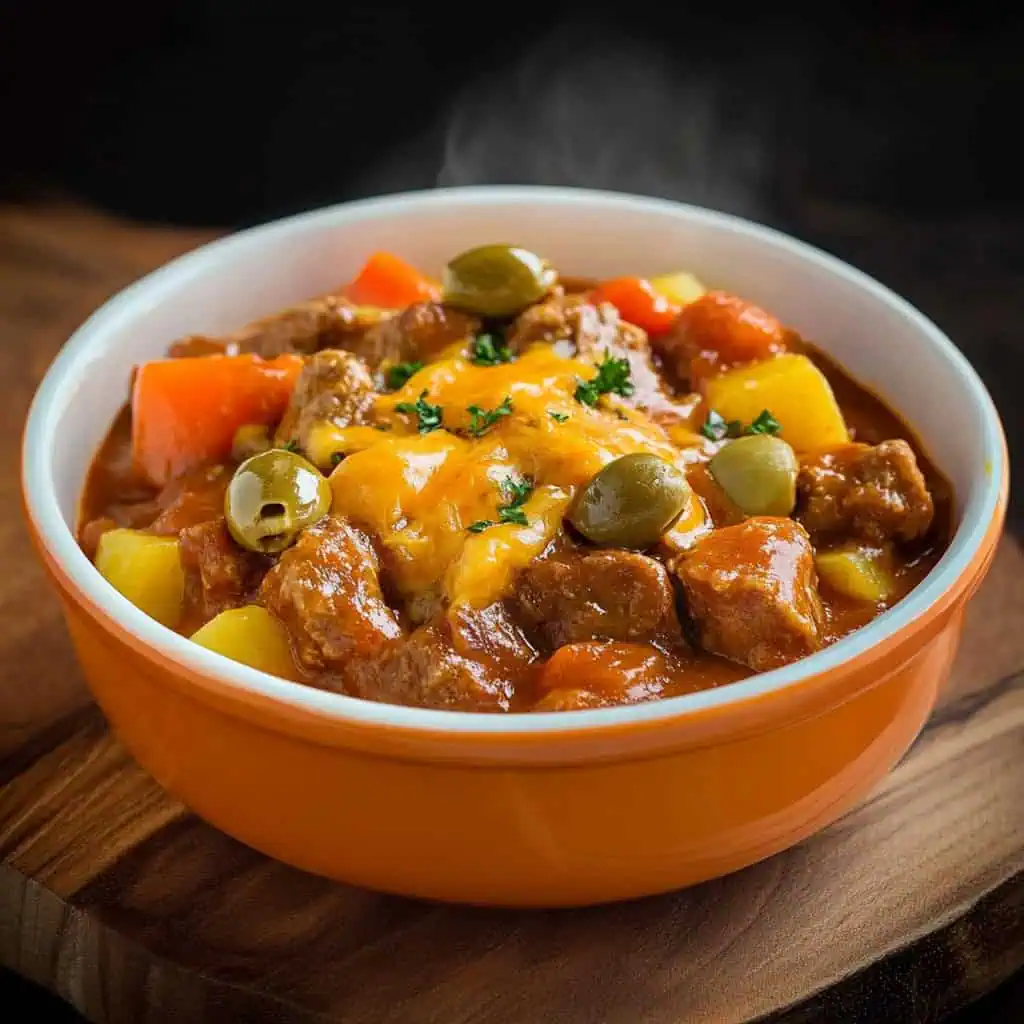
Why You'll Love This Recipe
- Rich and Complex Flavors: The combination of tender pork, liver spread, olives, and cheese creates a depth of flavor that sets this version apart from basic kaldereta
- Make-Ahead Friendly: Tastes even better the next day, perfect for busy hosts
- Customizable Heat Level: Can be adjusted to your family's spice preference
- Restaurant-Quality: Impressive enough for special occasions but simple enough for family dinners
- Complete Meal: A hearty one-pot dish that contains protein, vegetables, and sauce
Ingredients
The ingredients in this pork caldereta work together to create the perfect balance of flavors and textures. Pork shoulder provides a tender, flavorful base that becomes succulent after slow cooking. The liver spread is the secret weapon, adding a rich depth that can't be achieved with tomatoes alone.
Manzanilla olives introduce a tangy brightness that cuts through the richness, while the bell peppers and carrots add natural sweetness and color. Potatoes absorb the savory sauce while adding heartiness, and the melted cheese creates a creamy finish that transforms this from an everyday stew into something special.
Each component plays an essential role in creating that distinctive caldereta flavor that makes this dish a Filipino favorite.
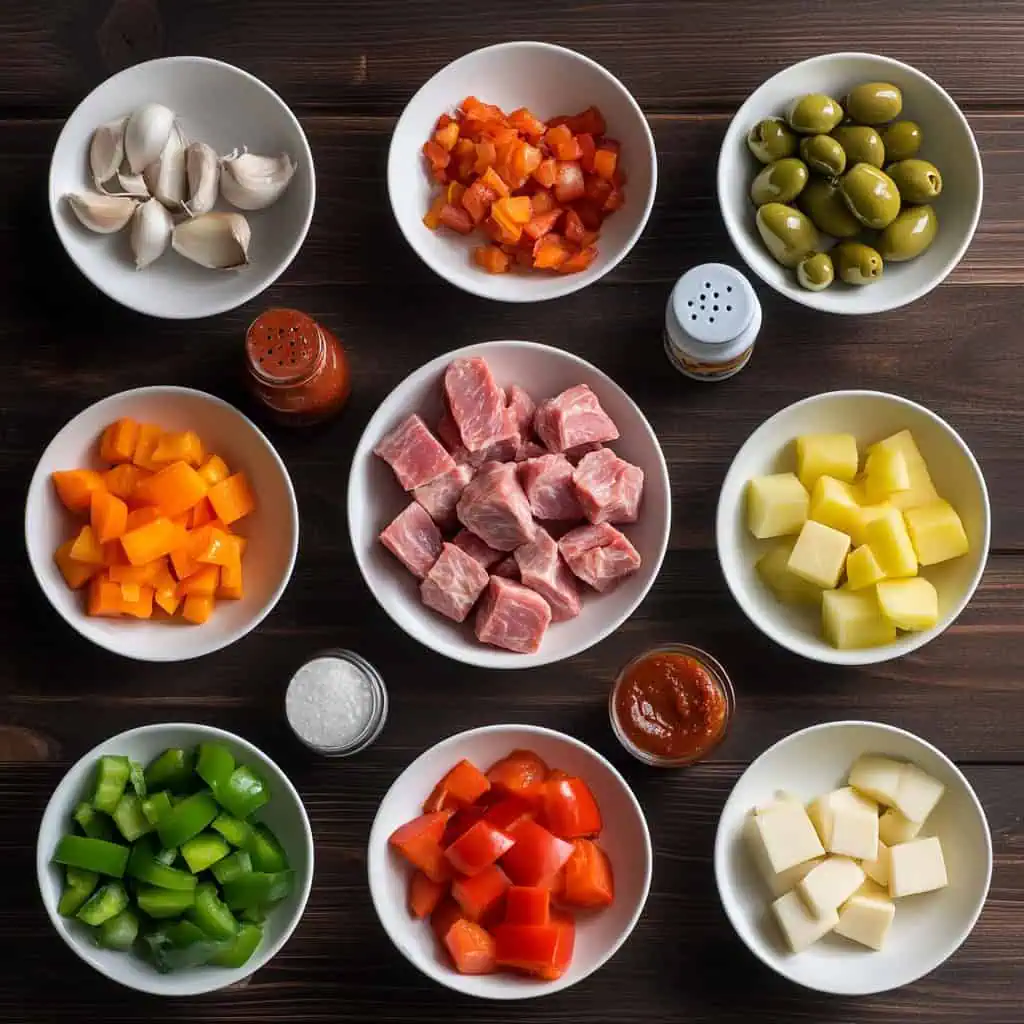
For the Meat:
- 2 lbs pork shoulder, cut into 2-inch cubes
- 1 Knorr Pork Cube
- 3 tablespoons cooking oil
- Salt and ground black pepper to taste
For the Sauce Base:
- 1 medium yellow onion, finely chopped
- 3 cloves garlic, crushed
- 1 8 oz. can tomato sauce
- ¼ cup liver spread
- 1 ½ cups water
Vegetables and Add-ins:
- 1 small red bell pepper, cut into squares
- 1 small green bell pepper, cut into squares
- 1 small baking potato, cubed
- 1 medium carrot, cubed
- ½ cup Manzanilla olives
- ¼ cup shredded Cheddar cheese
Equipment
- Large Heavy-Bottom Pot: Essential for even heat distribution and preventing burning. A Dutch oven works perfectly here to maintain consistent temperature during the long simmer.
- Sharp Chef's Knife: Needed for cutting meat and vegetables uniformly, ensuring even cooking times.
- Wooden Spoon: Used for stirring without scratching your pot, especially important when mixing in the liver spread.
- Measuring Cups and Spoons: For accurate ingredient portions that maintain the perfect sauce consistency.
- Cutting Board: Preferably with a juice groove to catch liquids when cutting the pork.
- Garlic Press: Optional but helpful for crushing garlic efficiently to release maximum flavor.
- Ladle: For serving the stew with generous portions of sauce.
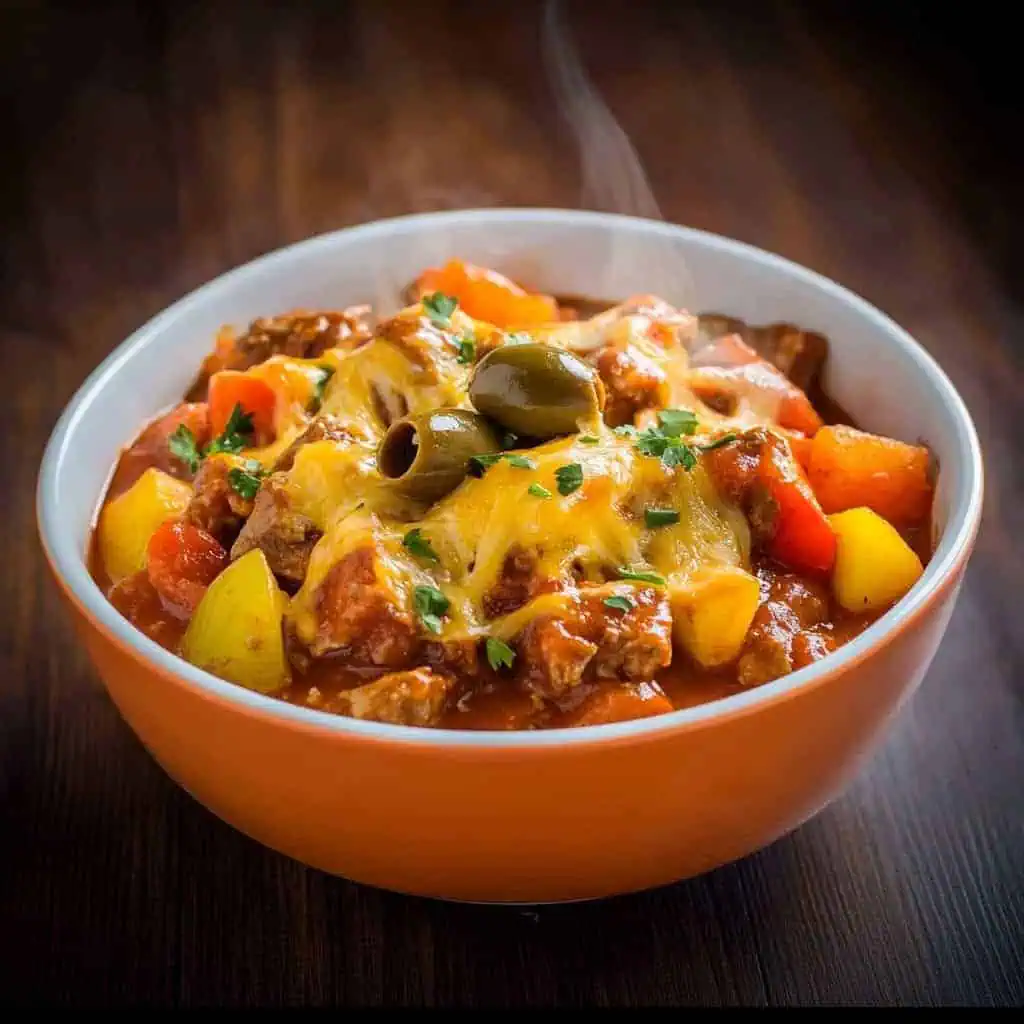
How To Make
- Prep Ingredients: Cut your pork shoulder into uniform 2-inch cubes. Chop onions finely, crush garlic cloves, cut potatoes and carrots into 1-inch cubes, and slice bell peppers into squares.
- Build Flavor Base: Heat oil in a large pot over medium heat (350°F). Add crushed garlic and cook for 30 seconds until fragrant. Add chopped onions and cook for 2-3 minutes until translucent. Add the pork cubes and cook for 5-7 minutes, stirring occasionally until the meat browns on all sides.
- Create the Sauce: Pour in the tomato sauce and water, then bring to a boil. Add the Knorr Pork Cube and stir well. Lower the heat (300°F), cover the pot, and simmer for 45-60 minutes or until the pork becomes tender enough to break apart easily with a fork.
- Add Vegetables: Once the meat is tender, add the carrots and olives. Cook covered for 3-4 minutes. Add the potatoes and bell peppers next. Stir in the liver spread until well combined. Cover again and cook for 5-7 minutes or until the vegetables are tender but still maintain some crispness.
- Finish and Serve: Taste and season with salt and black pepper as needed. Transfer everything to your serving dish and top generously with shredded cheese while the stew is still hot so it melts slightly. Let it rest for 10 minutes before serving to allow the flavors to meld perfectly. Serve hot with steaming white rice.

Tips from Lola's Kitchen
- Choose the Right Cut: Select pork shoulder with good fat marbling for the most tender, flavorful results.
- Patience is Key: Don't rush the meat tenderizing process—low and slow cooking is essential for that melt-in-your-mouth texture.
- Vegetable Timing: Add vegetables in stages to prevent mushy textures—hardier vegetables first, delicate ones last.
- Rest Before Serving: Let the stew rest for 10-15 minutes before serving; this allows flavors to meld and intensify.
- Cheese Strategy: Reserve some cheese for table service so guests can add more if desired—the cheese melting into the hot stew is part of the experience.
- Sauce Thickness: The sauce should coat the back of a spoon but still flow easily—neither too thick nor too thin.
Substitutions
- Pork Shoulder: Substitute with pork belly for richer flavor or beef chuck for a different twist.
- Knorr Pork Cube: Any pork bouillon or 1 tablespoon of fish sauce with a pinch of sugar works well.
- Liver Spread: Mashed chicken liver sautéed with a bit of butter can be used instead.
- Cheddar Cheese: Queso de bola, processed cheese, or any melting cheese like Monterey Jack works beautifully.
- Manzanilla Olives: Kalamata olives or capers can provide a similar tangy, briny element.
- Tomato Sauce: If unavailable, use 4 tablespoons of tomato paste diluted in 1 cup of water.
Troubleshooting
- Sauce Too Thick: Add hot water or broth gradually, one tablespoon at a time, while stirring until desired consistency is reached.
- Sauce Too Thin: Simmer uncovered for 5-10 minutes to reduce, or make a slurry with 1 teaspoon cornstarch and 1 tablespoon cold water.
- Tough Meat: Continue cooking on low heat for additional 15-minute increments, adding water if needed until fork-tender.
- Too Salty: Add a quartered potato while cooking to absorb excess salt, or balance with 1 teaspoon of sugar and a squeeze of lemon juice.
- Bland Flavor: Enhance with 1 tablespoon of fish sauce, a splash of Worcestershire sauce, or an additional half portion of liver spread.
Storage & Reheating
- Refrigerator: Store in an airtight container for up to 3 days. The flavor actually improves after a day as ingredients meld.
- Freezer: Can be frozen for up to 2 months. Cool completely before transferring to freezer-safe containers.
- Reheating: Heat slowly over medium-low heat, adding water if needed (about 1-2 tablespoons at a time). Stir occasionally to prevent burning.
- Best Practice: Reheat only what will be consumed to maintain quality for subsequent meals.
- Finishing Touch: Add a small sprinkle of fresh cheese when reheating to refresh the dish's richness.
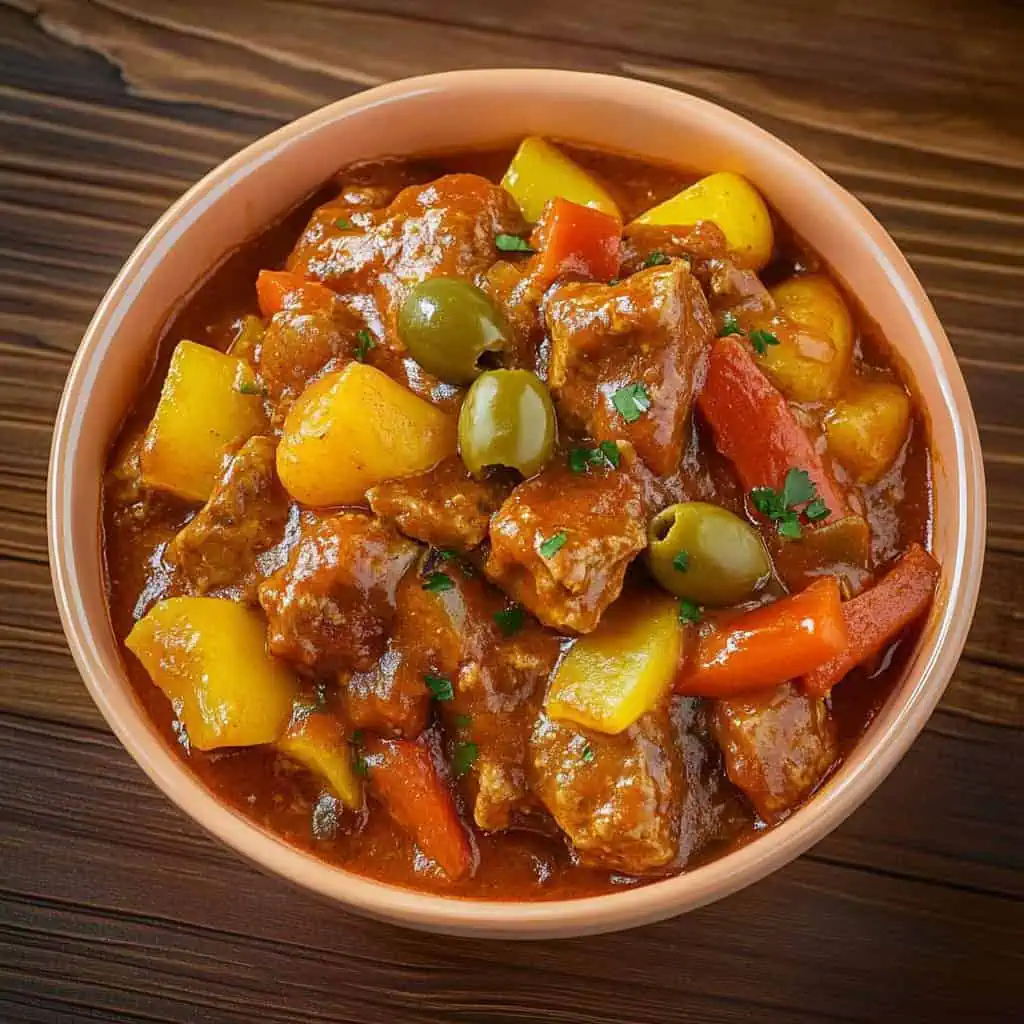
FAQ
Can I make this in advance?
Yes, it actually tastes better the next day as flavors develop further. Make it up to 48 hours ahead and reheat gently before serving.
How do I know when the pork is tender enough?
The meat should easily break apart with a fork with minimal resistance, if you need to apply pressure, it needs more time.
Can I use a pressure cooker or Instant Pot?
Yes, reduce cooking time to 25-30 minutes under pressure, then add vegetables and complete remaining steps after pressure release.
Why add cheese to caldereta?
It adds richness and creaminess to the sauce, making it more special. This modern addition transforms the dish into a celebration-worthy meal.
Is this recipe spicy?
No, the basic version is mild and family-friendly, but you can add chilies or hot sauce to taste for heat.
Can I use other meats instead of pork?
Absolutely! Beef chuck works wonderfully (increase cooking time by 30 minutes), while chicken thighs cook faster (reduce time by 15-20 minutes).
What makes caldereta different from other Filipino stews?
The distinctive liver spread and addition of olives and cheese sets it apart from other Filipino tomato-based stews like menudo or afritada.
Related
Looking for other recipes like this? Try these:

Pork Caldereta (Kalderetang Baboy)
Equipment
- Large Heavy-Bottom Pot (Kaldero) For even heat distribution and preventing burning
- Sharp knife (matalim na kutsilyo) For cutting meat and vegetables uniformly
- Wooden spoon (sandok na kahoy) For stirring without scratching the pot
- Measuring cups and spoons (Panukat) For accurate ingredient portions
- Cutting board (Sangkalan) For preparation work
- Garlic press (optional) For crushing garlic efficiently
Ingredients
For the Meat
- 2 lbs pork shoulder kasim, cut into 2-inch cubes
- 1 Knorr Pork Cube
- 3 tablespoons cooking oil
- Salt and ground black pepper to taste
For the Sauce Base
- 1 medium yellow onion sibuyas, finely chopped
- 3 cloves garlic bawang, crushed
- 1 8 oz. can tomato sauce
- ¼ cup liver spread atay spread
- 1 ½ cups water
Vegetables and Add-ins
- 1 small red bell pepper pamintang pula, cut into squares
- 1 small green bell pepper pamintang berde, cut into squares
- 1 small baking potato patatas, cubed
- 1 medium carrot karot, cubed
- ½ cup Manzanilla olives
- ¼ cup shredded Cheddar cheese
Instructions
- First, cut your pork shoulder into uniform 2-inch cubes and gather all ingredients. Chop onions finely, crush garlic cloves, cut potatoes and carrots into 1-inch cubes, and slice bell peppers into squares.
- Heat oil in a large pot over medium heat (180°C/350°F). Add crushed garlic and cook for 30 seconds until fragrant. Add chopped onions and cook for 2-3 minutes until they become clear. Add the pork cubes and cook for 5-7 minutes, stirring occasionally until the meat browns on all sides.
- Pour in the tomato sauce and water, then bring to a boil. Add the Knorr Pork Cube and stir well. Lower the heat (150°C/300°F), cover the pot, and let it simmer for 45-60 minutes or until the pork becomes tender enough to break apart easily with a fork.
- Once the meat is tender, add the carrots and olives. Cook covered for 3-4 minutes. Add the potatoes and bell peppers next. Stir in the liver spread until well combined. Cover again and cook for 5-7 minutes or until the vegetables are tender but still maintain some crispness.
- Taste and season with salt and black pepper as needed. Transfer everything to your serving dish and top generously with shredded cheese while the stew is still hot so it melts slightly. Let it rest for 10 minutes before serving to allow the flavors to come together perfectly. Serve hot with steaming white rice and enjoy.
Tips from Lola's Kitchen
- Choose pork shoulder with some fat marbling for the most tender results
- Don't rush the meat tenderizing process - low and slow is key
- Add vegetables in stages to prevent overcooking
- Let the stew rest for 10-15 minutes before serving to allow flavors to meld
- Reserve some cheese for table service so guests can add more if desired
Nutrition
The Story Behind Pork Caldereta (Kalderetang Baboy)
In every Filipino kitchen, kaldereta holds a special place in our hearts - it's more than just a stew, it's a reflection of our country's rich culinary heritage. This hearty dish, which gets its name from the Spanish word "caldera" meaning cauldron, arrived in the Philippines during the 333 years of Spanish colonization, but we've since made it uniquely our own.
Originally prepared with goat meat by Spanish settlers, kaldereta evolved as Filipino cooks adapted it to local tastes and available ingredients. While goat kaldereta remains popular in many regions, pork kaldereta has become a beloved variation, especially in urban households where pork is more readily available. The magic of kaldereta lies in its versatility - each region, each family has its own special twist to the recipe.
What makes our version stand out is how we've transformed this everyday dish into something celebration-worthy. In many Filipino homes, including mine, kaldereta has become a staple of Noche Buena - that special midnight feast on Christmas Eve. The addition of Manzanilla olives pays homage to its Spanish roots, while the melted cheese topping is a modern Filipino innovation that adds a layer of indulgence perfect for special occasions.
The heart of kaldereta's appeal is its sauce - a rich blend of tomatoes and liver spread that creates a deep, complex flavor you won't find in other Filipino stews. The liver spread, which might seem unusual to some, is actually what gives kaldereta its distinct richness. This ingredient was likely inspired by European pâtés but has become an essential element in Filipino cuisine.
Today, pork kaldereta continues to evolve in Filipino kitchens worldwide. Whether served at a family gathering in Manila or at a Filipino-American holiday celebration in Los Angeles, it represents how we Filipinos embrace our culinary heritage while making it our own. This recipe preserves those traditional flavors while adding special touches that make it worthy of our most cherished celebrations.
Remember, the best kaldereta is the one cooked with patience - allowing the pork to become fork-tender and the flavors to meld together perfectly. It's this slow, careful cooking process that transforms simple ingredients into a dish that brings families together and creates lasting memories around the dinner table.


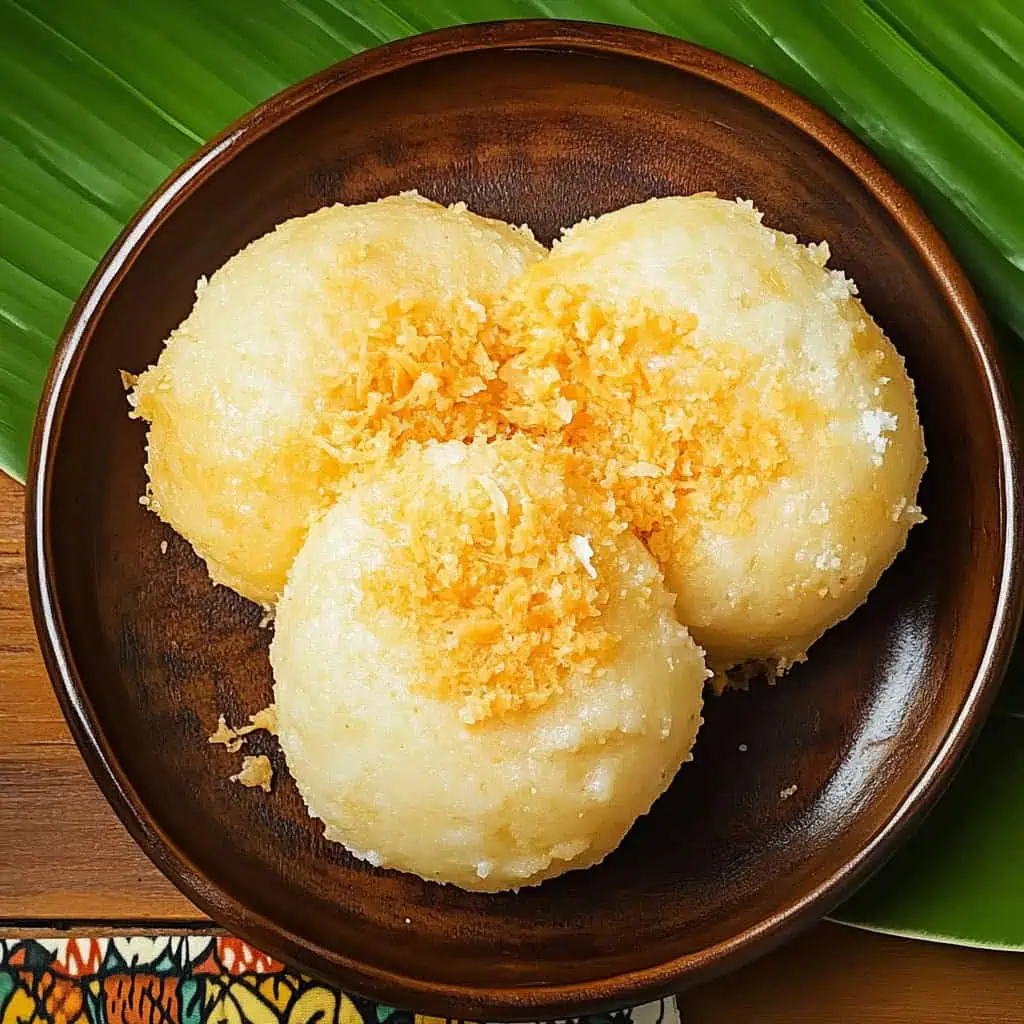
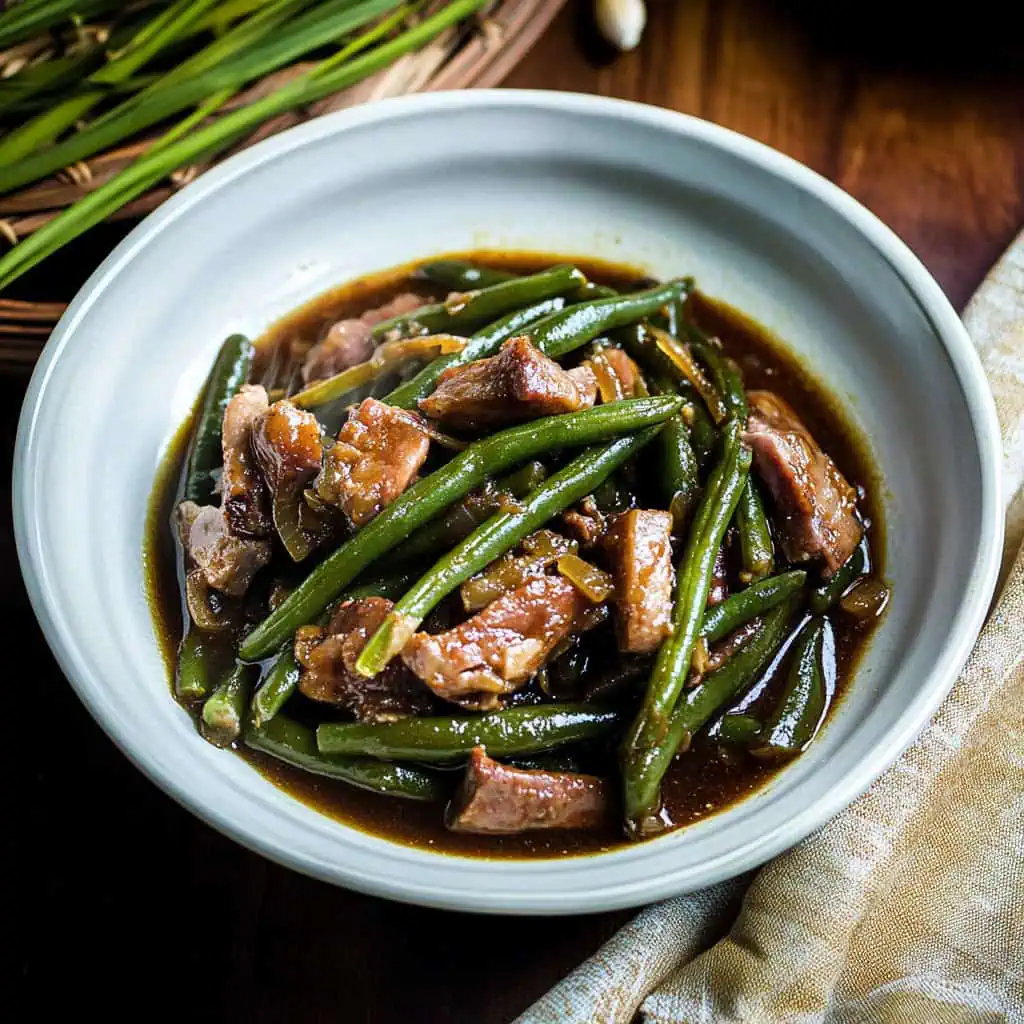

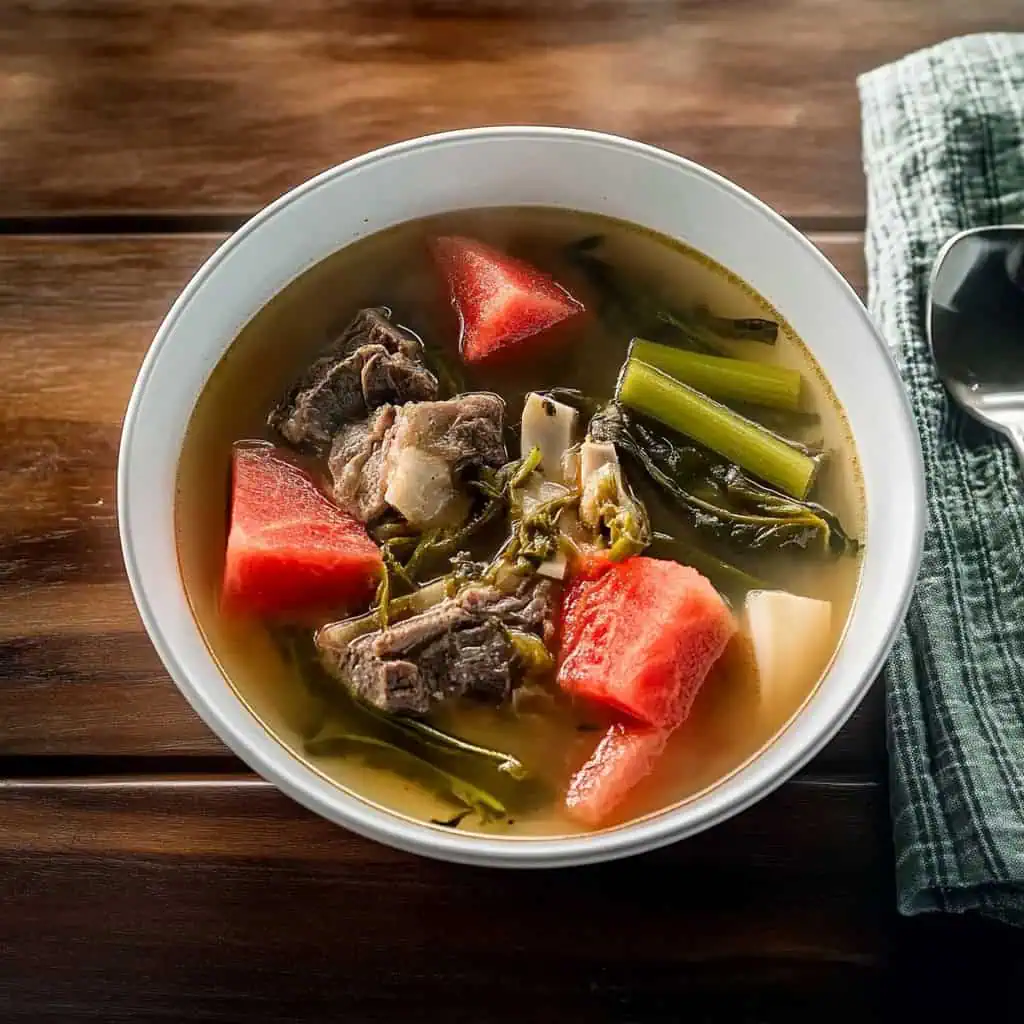

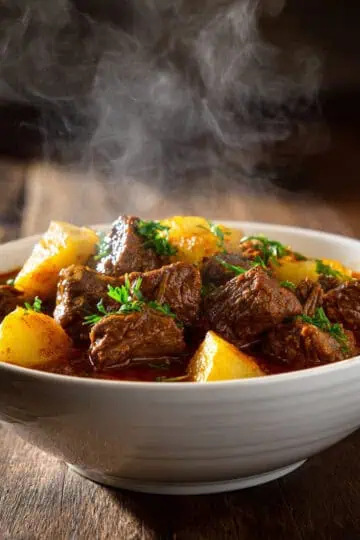
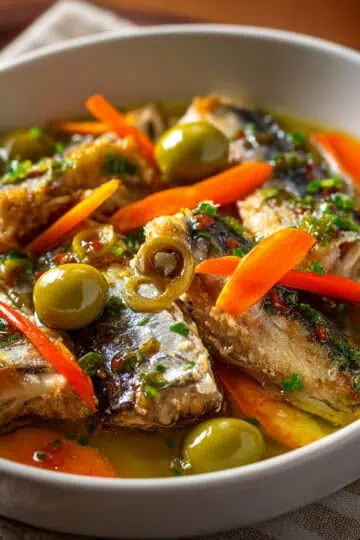

Comments
No Comments